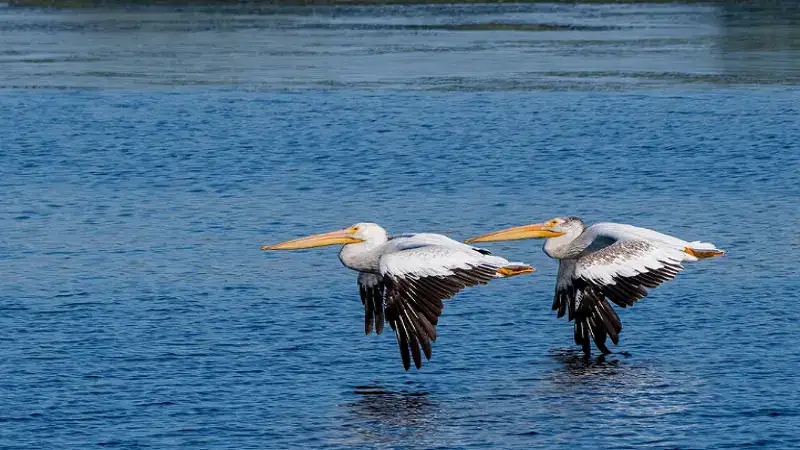Understanding Swans: The Basics
Swans are large, elegant waterfowl known for their long necks and striking white feathers. They belong to the genus Cygnus within the family Anatidae, which also includes ducks and geese. Swans are native to both the Northern and Southern Hemispheres and are commonly found in freshwater lakes, rivers, and marshes.
The most commonly recognized swan species include:
- Mute Swan (Cygnus olor): Known for its trumpeting call and all-white plumage.
- Whooper Swan (Cygnus cygnus): Recognizable by its distinctive whooping call.
- Black Swan (Cygnus atratus): Native to Australia, noted for its black feathers and red beak.
- Trumpeter Swan (Cygnus buccinator): The largest swan species in North America, famous for its deep, resonant call.
The Cobs: The Male Swans
In the world of swans, the term “cob” refers to the male swan. Cobs are characterized by their large size, robust build, and commanding presence. They play a critical role in the swan family unit, particularly in mating and territory defense.
Physical Characteristics
Male swans typically have a more prominent and thicker neck compared to females, known as pens. This difference is subtle but noticeable, especially when both sexes are observed together. Cobs also possess larger beaks and more substantial body sizes, making them more formidable in conflicts.
Behavior and Roles
Cobs are territorial and highly protective of their nesting sites. During the breeding season, they engage in elaborate displays to defend their territory from intruders. This includes flapping their wings, raising their necks, and issuing loud trumpeting calls. The aggressive behavior serves both to deter rivals and to assert dominance.
In addition to protecting their territory, cobs play a significant role in the care and protection of their young. After mating, the cob helps the pen in building the nest, which is usually situated on the water’s edge. He is also responsible for guarding the nest and later, the cygnets, from potential threats.
The Cygnets: The Swan Offspring
Cygnets are the young swans, and their development is a marvel of nature. From hatching to adulthood, cygnets undergo a fascinating transformation.
Hatching and Early Life
Swan eggs are typically laid in early spring. A female swan, or pen, lays between 4 to 8 eggs, which she incubates for around 35 to 40 days. During this period, the cob provides protection and may help in collecting nesting material. Once the cygnets hatch, they are covered in downy feathers, which are soft and grayish. The pen takes the lead in caring for the newborn cygnets, keeping them warm and guiding them to water.cobs and cygnets nyt
Growth and Development
Cygnets are precocial, meaning they are relatively mature and mobile shortly after hatching. They are capable of swimming and foraging for food with some guidance from their parents. Over the next few months, their feathers gradually change from gray to the adult white plumage, though this can vary depending on the species. During this time, the family remains close-knit, with both parents actively involved in their care.cobs and cygnets nyt
Learning to Fly
One of the most remarkable phases in a cygnet’s life is learning to fly. This process usually begins around 4 to 6 months of age. The cygnets practice flapping their wings and making short flights. Parental guidance continues during this period, with the cob and pen offering protection and encouragement.
Conservation and Symbolism
Swans hold a special place in various cultures, often symbolizing beauty, grace, and transformation. In literature and art, swans are frequently associated with themes of love and elegance. The famous ballet “Swan Lake” by Pyotr Ilyich Tchaikovsky is a prime example of how swans have inspired artistic expression.cobs and cygnets nyt
Conservation Status
Many swan species are considered to be of least concern; however, some face threats from habitat loss, pollution, and hunting. Conservation efforts are in place to protect swan populations, focusing on preserving wetlands and ensuring that swans have safe environments to thrive.
In the United Kingdom, for instance, swans are protected under the Swans Act 1981, which makes it illegal to harm or kill them without a license. Similar protection measures are in place across Europe and North America.
Swans in Popular Culture
The New York Times (NYT) has featured numerous articles on swans, reflecting their significance in modern culture and environmental issues. For instance, a recent NYT piece explored the beauty and ecological importance of swans, highlighting ongoing conservation efforts and the challenges faced by these elegant birds.cobs and cygnets nyt
Swans also appear in various mythologies and legends. In Greek mythology, Zeus transformed into a swan, and in Native American cultures, the swan is often seen as a symbol of transformation and beauty.cobs and cygnets nyt
Interesting Facts About Swans
- Longevity: Swans are among the longest-lived birds. They can live up to 20 years in the wild and even longer in captivity.
- Migration: Some swan species, like the Whooper Swan, are migratory and travel long distances between their breeding and wintering grounds.
- Vocalization: Swans have a diverse range of vocalizations. For example, the Trumpeter Swan’s call can be heard over several miles.
- Impressive Wingspan: Swans have one of the largest wingspans of any bird, with some species reaching up to 10 feet.
Conclusion
Swans, with their elegance and poise, continue to be a source of fascination and inspiration. From the protective cobs to the adorable cygnets, each aspect of their life cycle showcases the intricate beauty of these remarkable birds. Their presence in our cultural heritage and the ongoing conservation efforts underscore their importance and the need to safeguard their habitats.cobs and cygnets nyt
Whether you’re a nature enthusiast, a conservationist, or simply someone who appreciates the beauty of wildlife, swans offer a unique glimpse into the marvels of the natural world. By understanding and respecting these magnificent creatures, we contribute to preserving their grace and grandeur for future generations.cobs and cygnets nyt



